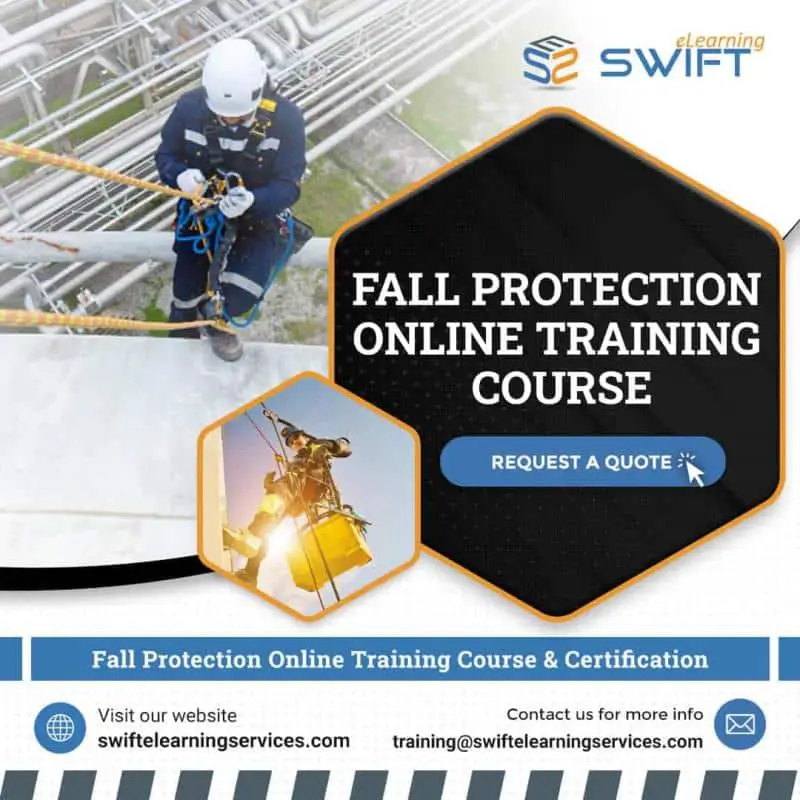Fall Protection Training Online Course and Certification

For those working at heights, understanding the hazards associated with their job is crucial. This fall protection training program offers an excellent introduction to the principles of fall protection, but it is important to note that further training is necessary to ensure proper use of fall arrest equipment in accordance with the manufacturer’s instructions and safe work practices.
The course is user-friendly, allowing learners to pause and resume the content as needed, and is fully narrated and AODA compliant. Each topic is presented in detail, using relevant images and activities to ensure comprehension. At the end of each module, a summary and practical training checklist are provided, and a final test is given to assess understanding.
The course covers a wide range of topics, including falls and fall protection, fall hazards, prevention and control, slips, trips, and falls, fall protection equipment, anchor systems, components of a system, inspections, storage and maintenance, donning harnesses, and fall protection plans.
In the introduction, the course covers the anatomy of a fall, the types of fall hazards, and elimination, prevention, and control of falls. The slips, trips, and falls chapter offers tips on using ladders properly and avoiding slips, trips, and falls on level surfaces and from elevation.
The fall protection equipment chapter provides detailed explanations of guardrails, travel-restraint systems, fall-restricting systems, fall-arrest systems, and safety nets, as well as provincial height requirements for fall protection. The chapter also covers the CSA standards, personal fall arrest system, fall-restraint system, positioning device systems, body/waist belts, safety monitoring systems, warning line systems, catch platforms, and controlled access zones.
In the anchor systems chapter, learners will understand the three basic types of anchors, safety factors, anchorage, clearance, pendulum effect, and improper anchorage points. The components of a system chapter explains connectors, rope grabs, carabiners, locking snap hooks, full body harnesses, lanyards, shock absorbers, and lifelines (horizontal and vertical), as well as the rope-breaking strength standards, loss of rope strength from knots, self-retracting lifeline, and impact indicators.
The inspections chapter provides detailed procedures for inspecting harnesses, lanyards, webbing, and rope lanyards, while the storage and maintenance chapter covers guidelines for storing and maintaining personal fall arrest equipment.
The donning harnesses chapter explains the proper procedure for wearing a full body harness to ensure maximum comfort and protection. Finally, the fall protection plan chapter reviews when fall protection plans are necessary and provides detailed scenarios for rescue training, suspension trauma, suspension trauma straps, aerial lifts, and connecting elevated work platforms.
Overall, this fall protection training program is an excellent resource for anyone working at heights, providing comprehensive information on the hazards associated with this type of work and how to protect against them.
